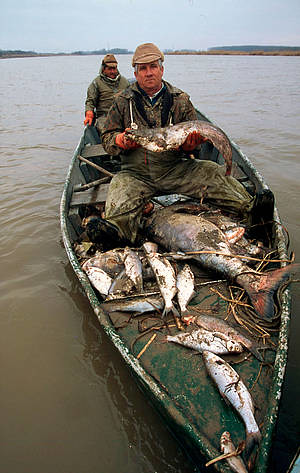Cyanide is acutely and almost instantaneously poisonous (“toxic”) to living organisms, including humans. Cyanide harms by blocking the ingestion of oxygen by cells. Acute effects include rapid breathing, tremors, effects on the nervous system, and ultimately, death. Chronic effects include weight loss, effects on the thyroid and nerve damage.
Cyanide, however, does not remain in the environment for long and does not accumulate in sediments or organisms (including humans).
Heavy metals do not break down and are “bio-accumulative” in plants, animals and the environment. This means that the level of toxins builds up in an organism over time, increasing its toxicity and threat to local ecosystems. Toxins may also be passed on to other species if a toxic organism is eaten. Therefore, living organisms face high risks with long-term and chronic exposure to heavy metals.
Fish are about one thousand times more sensitive to cyanide than humans. If fish do not die from limited exposure, they can still have reduced swimming ability, problems in reproducing (possibly creating deformed babies), and increased vulnerability to predators. Fish are excellent in gauging the presence of cyanide in water — if fish are living after exposure, then no other form of life will have been harmed.
Dead fish being collected from the cyanide spill
(Source: http://wwf.panda.org)
At relatively low levels, health effects from lead can include interference with red blood cell chemistry, delays in normal physical and mental development in babies and young children, slight deficits in the attention span, interference with hearing and learning abilities of children, and slight increases in the blood pressure of some adults. Changes in the levels of certain blood enzymes and in child development may even occur at very low blood lead levels. Chronic exposure to lead has been linked to brain and kidney disease and cancer in humans.
Reported Damages
According to official Romanian sources the cyanide spill caused an interruption in the water supply in 24 localities, inconvenience to citizens, and supplementary costs in the sanitary field and in industry by interruption of the production process. The amount of dead fish reported was very small and the phytoplankton and zooplankton in the Somes river "was regenerated in 16 days to the proportion of 60%".
The Hungarian Authorities completed an echo sounder survey along the Tisza River to detect the remaining quantity of consumable fish and to estimate the quantity of dead fish. The result gives an estimated amount of dead consumable fish of 1240 tons.
According to the Yugoslavian Authorities a large amount of dead fish appeared in the Yugoslavian part of the Tisza river. No major fish kills were reported from the Danube.

